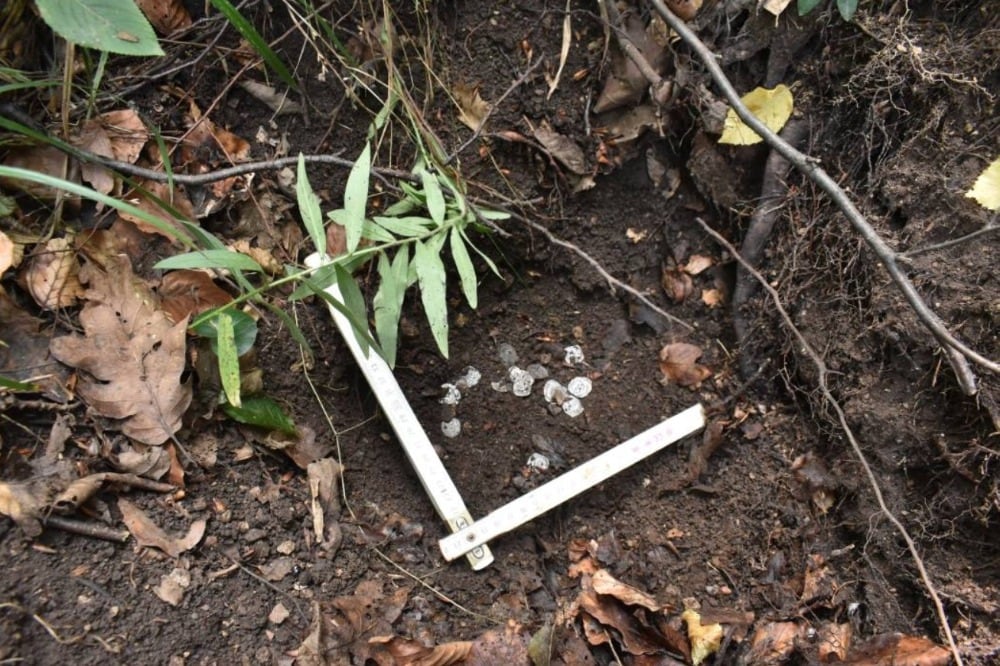Přeju mu to, jak zážitek, tak love z nálezu!
Pokud to bylo tak jak píší, tak má štěstí jak sviň. Kdybych tam šel já, tak na mě ten strom leda tak spadne. 
He lost his job to a coronavirus, found a treasure trove of silver coins from the 13th and 14th centuries in the autumn
Categories: Minting - Numismatics , Finds and rescue research in the Czech Republic , Finds and rescue research abroad
A few small shiny objects of irregular shape were found by an unemployed tourist by chance. He noticed a hint of reliefs, e.g. a dragon, and the objects seemed to him to be silver. He therefore reported the discovery to the Regional Heritage Office in Trnava, which sent archaeologists to the site. In the meantime, the instructed finder disguised the site and did not interfere further with the excavation.
The archaeologists met the finder at the agreed time to show them the site. They searched the excavation with a metal detector, which did indeed report a very strong signal. When they carefully uncovered the site of the signal, they discovered a total of 147 silver coins and their fragments in a trench measuring about 25 x 20 cm. Because the finder reported the coins and did not pick them up, important information was preserved. The coins were first placed in an organic wrapping of leather or cloth, but no remains of this were preserved, and were subsequently buried in the ground.
Most of the coins have been identified so far: these are mainly Viennese pfennigs and, to a lesser extent, Hungarian imitations. The Viennese pfennigs have an irregular square shape with a diameter of 15 to 16 mm. They were minted by the Austrian rulers from the middle of the 12th century. The coins had various motifs, including a dragon, an eagle, a cross, a fish and many others... Around 1300, their average weight and quality dropped significantly. Hungarian imitations of Viennese phoenixes were rather circular in shape, had a lower silver content and also differed in their motifs.
In the second half of the 13th century. The quality of the Hungarian denarii declined significantly, and the Viennese pfennigs became popular for a long time.This is also reflected in the composition of the depots deposited at that time. The intensive trade contacts with Austria, the favourable exchange rate against domestic coins and military campaigns also helped. The Hungarian rulers tried to get the Vienna phoenixes out of circulation by minting their own imitations, but the merchants did not like them very much.
According to the Slovak Monuments and Criminal Law, accidental finds must be found no later than the next working day to the relevant regional heritage office and left on the site unaltered until an authorised archaeologist has inspected it. Since 2002, this is only the second reported accidental discovery of coins in the Trnava KPÚalthough since 2009 the Slovak Heritage Office has been granting honest finders a reward of up to 100% of the value of the find.
In the case of the depot of Viennese phoenixes, according to archaeologists, everything was done properly, according to the law. First, the value of the coins will be assessed and then the finders' fee will be paid. Information about the find will be presented in specialist literature and the coins will be displayed in museums.
Roman Němec




Sources: seredsity.sk, pamiatky.sk, cas.sk, rtvs.sk
The article is included in categories:
- Archive of articles > Minting - Numismatics
- Archive of articles > Archaeology > Finds and rescue research in the Czech Republic
- Archive of articles > Archaeology > Finds and rescue research abroad
Post
Ty příběhy jsou vesměs na jedno brdo a já se nedivím...
Za osmnáct let teprve druhý ohlášený depot...kdo by se divil...
Dá se říci štěstí v neštěstí. Pokud to není detektorář, myslím že si to tak neužije tu náhodu. Ale co,hlavně že je to v dobrých rukách. 
Tak a hurá koupit Hejkala a hned do lesů 😂🤣😂🤣👍👍👍...
Přišel o práci díky koronaviru.. Tak a tady veškerá podobnost s mým příběhem končí 








Odměna až do 100% ceny nálezu. Kdo by to řek, žejo. Jen to až je jaksi, jak to jen říct.












